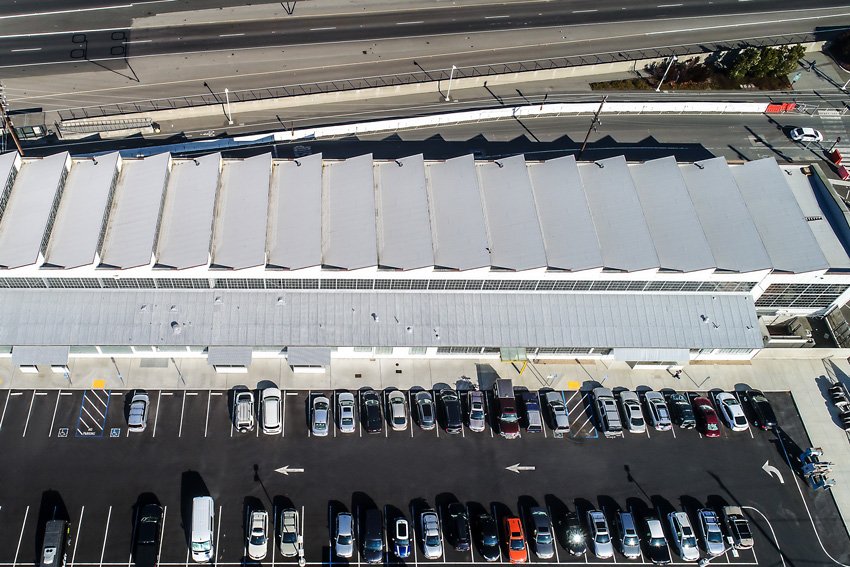Low-Slope Roofing: Specifying a Quality, Cost-Effective Roof System While Considering the Skilled Labor Shortage
How to Specify a Cost-Effective, Quality Low-Slope Roofing System
In order to write a specification that reflects a client’s goals for performance and cost, it is important, considering the skilled labor shortage, for architects and designers to consider both materials and labor. In other words, an architect must balance a roof system’s material costs and intended performance as specified on paper with comprehensive and current-condition labor costs that reflect actual performance once the potential for human error is introduced on the roof. The following are a few guidelines to assist in the process of specifying a cost-effective, quality roofing system while considering the skilled labor shortage.
Identify Materials Proven to Meet Performance Goals
Roof system performance goals include reliability, resistance to puncture, fire and chemicals, and ease of maintenance and repair. The lifespan of a roof depends on many factors, beginning with proper installation, but proven performance of the roofing materials must be a consideration for specification.
Single-ply TPO roofing systems have been on the market since the early 1990s. While single-ply systems have gained popularity, this product has not been time-tested in the field for as long as other roofing types. Additionally, the relatively thin, single-layer of waterproofing protection increases the system’s risk of failure from multiple potential factors over multilayer solutions.
Modified bituminous roofing systems have been in use in one form or another for more than 100 years and thus are well-known for their durability, stress resilience, and low maintenance. In addition, because of their multi-ply makeup, these systems provide better protection from damage by sharp objects than PVC or EPDM, which—although durable—are still only single-ply membranes.
Understand the Impact of Design on Product Selection and Cost
As an architect or designer, your choices regarding roof design can play an important role in determining the best product and the installed cost of your client’s roof. Across all types of roof coverings observed in the study, base flashing and equipment curbs required more labor and time to complete and can represent a significant percentage of the total project labor costs. However, some products require more labor time on roof features than others.
Overall, the labor impact of flashing details were found to be 24 percent of the total man-hours on the multilayer bituminous systems and 31 percent of the total man-hours for the single-ply coverings. It can be concluded from this data that specification of a multilayer modified bituminous roofing system can offer labor cost savings on projects with a high number of flashing details.
Understand the Local Roofing Contractor/Labor Market and Crew Factors
Understanding the local roofing contractor and labor market is becoming increasingly important for architects and designers when trying to meet client cost expectations. A little research can go a long way in determining the skillset and reliability of local contractors. Many roofing contractors are in the position of taking on more work than they can handle and then using any warm body they can find to get the work done. However, in some markets, savvy contractors are realizing the benefits of balancing a skilled, professional, and reliable crew with the amount of quality work they can complete.
Beyond the skill level of the employees, the study also found multiple other factors that impact the efficiency of a roofing crew. These include:
Climate
Climate, including both extremes of hot and cold, can have a great impact on the efficiency of a roofing crew. Cold weather creates added time and additional work for heating adhesives, relaxing rolls and to weld all types of membranes. Workers can be inhibited in movement and accuracy with heavy and cumbersome cold-weather clothing and gloves and may require longer or more frequent break periods to warm up.
Heat can also affect crew efficiency by slowing installation because of heat-related fatigue and the need to hydrate and take regular breaks to avoid heat illness.
Another consideration is geographical areas that experience frequent storms, especially summertime thunderstorm activity, which can lead to increased costs because of disrupted workflow.
As an architect or specifier, these factors are outside of your control but should be considered when specifying a roof system in line with the client’s budget. Some roofing products and application methods may be impacted greater than others by project geography.
Crew Management
A roofing crew’s efficiency is impacted by how the crew is managed. Not surprisingly, unorganized or unmanaged crews will generally increase total installed costs. Important factors to consider when understanding local roofing contractors include:
- The communication methods and style of the crew and foreman
- Whether the contractor uses specialized teams
- How the tools and materials are staged
- Whether the foreman has effectively managed crews
- How much unproductive time a crew incurs (15.6 percent according to the study)
- The effectiveness of quality control measures to catch and fix mistakes
As a specifier, and considering the current labor market, investigating roofing contractors’ abilities and track record before making final decisions may aid in minimizing issues when it comes to installation.










